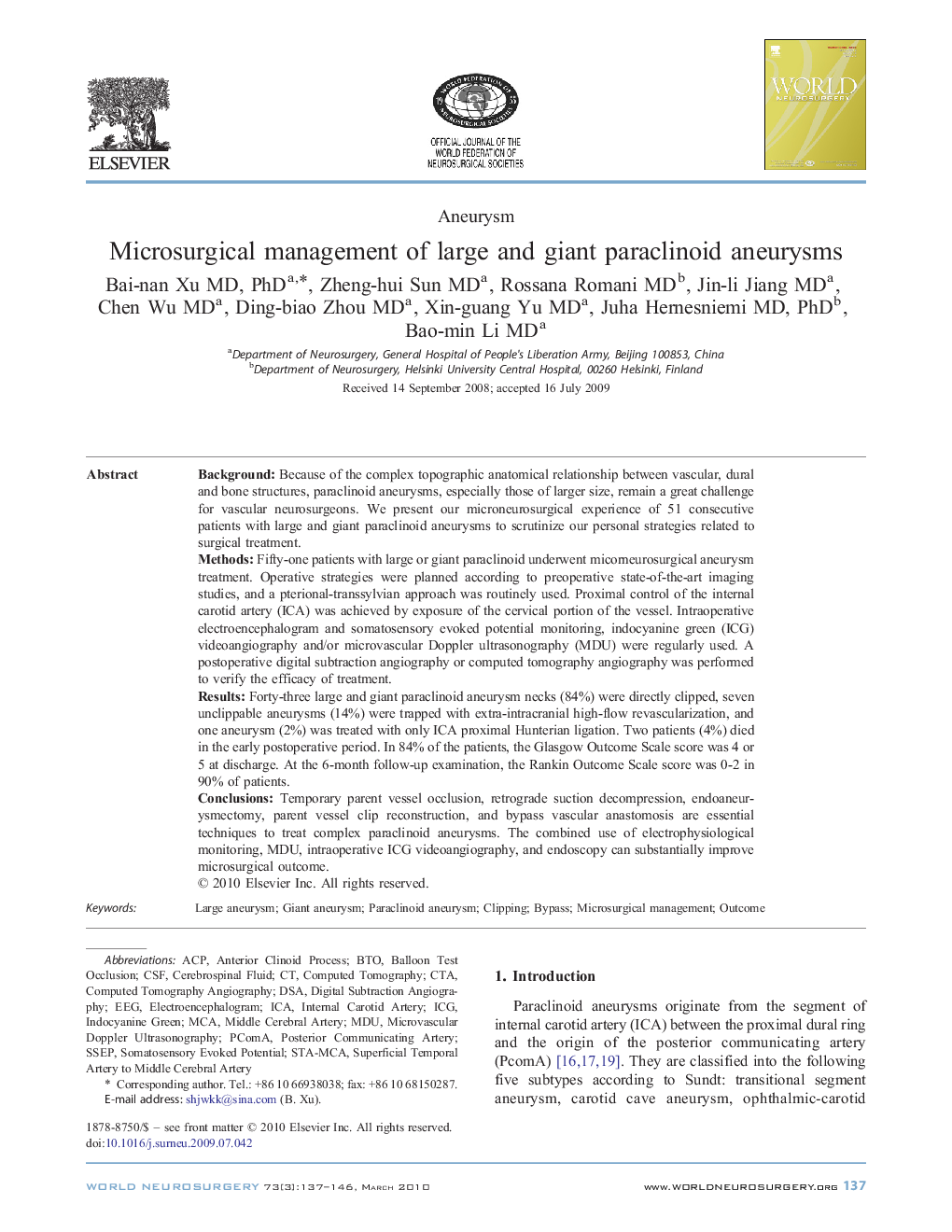| کد مقاله | کد نشریه | سال انتشار | مقاله انگلیسی | نسخه تمام متن |
|---|---|---|---|---|
| 3097299 | 1190941 | 2010 | 10 صفحه PDF | دانلود رایگان |

BackgroundBecause of the complex topographic anatomical relationship between vascular, dural and bone structures, paraclinoid aneurysms, especially those of larger size, remain a great challenge for vascular neurosurgeons. We present our microneurosurgical experience of 51 consecutive patients with large and giant paraclinoid aneurysms to scrutinize our personal strategies related to surgical treatment.MethodsFifty-one patients with large or giant paraclinoid underwent micorneurosurgical aneurysm treatment. Operative strategies were planned according to preoperative state-of-the-art imaging studies, and a pterional-transsylvian approach was routinely used. Proximal control of the internal carotid artery (ICA) was achieved by exposure of the cervical portion of the vessel. Intraoperative electroencephalogram and somatosensory evoked potential monitoring, indocyanine green (ICG) videoangiography and/or microvascular Doppler ultrasonography (MDU) were regularly used. A postoperative digital subtraction angiography or computed tomography angiography was performed to verify the efficacy of treatment.ResultsForty-three large and giant paraclinoid aneurysm necks (84%) were directly clipped, seven unclippable aneurysms (14%) were trapped with extra-intracranial high-flow revascularization, and one aneurysm (2%) was treated with only ICA proximal Hunterian ligation. Two patients (4%) died in the early postoperative period. In 84% of the patients, the Glasgow Outcome Scale score was 4 or 5 at discharge. At the 6-month follow-up examination, the Rankin Outcome Scale score was 0-2 in 90% of patients.ConclusionsTemporary parent vessel occlusion, retrograde suction decompression, endoaneurysmectomy, parent vessel clip reconstruction, and bypass vascular anastomosis are essential techniques to treat complex paraclinoid aneurysms. The combined use of electrophysiological monitoring, MDU, intraoperative ICG videoangiography, and endoscopy can substantially improve microsurgical outcome.
Journal: World Neurosurgery - Volume 73, Issue 3, March 2010, Pages 137–146